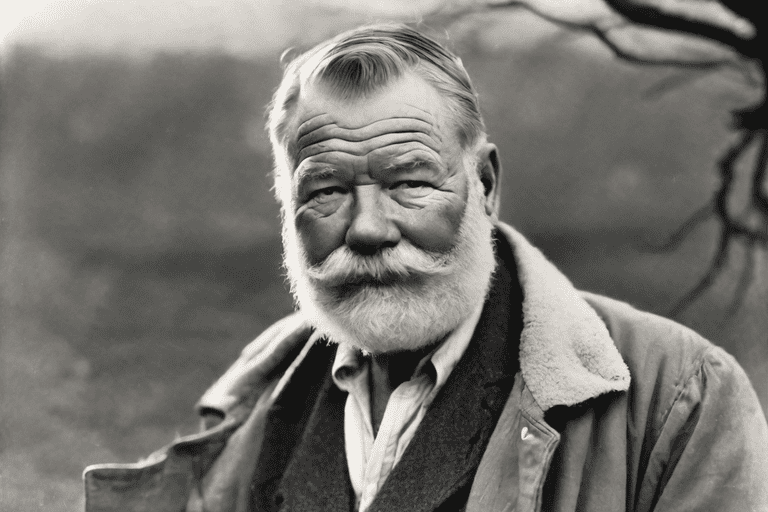 In our “Exploring” series, today we look at exploring Hemingway, a name synonymous with American literature, and celebrated as one of the greatest authors of the 20th century.
In our “Exploring” series, today we look at exploring Hemingway, a name synonymous with American literature, and celebrated as one of the greatest authors of the 20th century.
Exploring Hemingway
His works have captivated readers for decades, and his influence on modern literature is undeniable. But what exactly makes Hemingway such a revered figure in the literary world?
“As a writer, you should not judge, you should understand.”
Ernest Hemingway
I haven’t read a great deal of Hemingway’s work, so I enlisted the assistance of an LLM and some additional research to find an answer to the quest of exploring Hemmingway.
Simplistic Style:
Hemingway’s writing is characterized by its simplicity. He was a master of the ‘less is more’ approach. His sentences are short, direct, and devoid of unnecessary words. Yet, within this simplicity lies a depth of emotion and meaning. This style, often referred to as the “Iceberg Theory,” suggests that there’s more beneath the surface than what meets the eye. The true essence of his stories lies in the subtext, in what is left unsaid.
Authenticity:
Hemingway’s works often draw from his personal experiences. As an ambulance driver in World War I, a journalist during the Spanish Civil War, and an avid traveller, Hemingway witnessed the complexities of human nature and the world first-hand. His stories, whether set in the Italian front or a café in Spain, resonate with authenticity. Readers trust the world he creates because it stems from real-life experiences.
Exploration of Masculinity:
Hemingway’s protagonists often grapple with the concept of masculinity. Through characters like Jake Barnes in “The Sun Also Rises” or Robert Jordan in “For Whom the Bell Tolls,” he delves deep into the psyche of men, exploring themes of courage, love, war, and identity. His portrayal of masculinity is multifaceted – both heroic and vulnerable.
Timeless Themes:
The themes Hemingway explores in his works are universal and timeless. Love, war, loss, isolation, and the human condition are topics that, no matter the era, resonate with readers. His ability to tap into these ever-relevant themes ensures that his works remain pertinent and relatable.
Compelling Characters:
Hemingway’s characters are deeply human. They are flawed, passionate, and real. Whether it’s the disillusioned expatriates of “The Sun Also Rises” or the old fisherman Santiago from “The Old Man and the Sea,” readers see parts of themselves in his characters. They rejoice in their triumphs and mourn their losses.
Innovative Structure:
Hemingway wasn’t just a master of words but also of the structure. He played with narrative techniques, often using a stream-of-consciousness style or shifting perspectives, providing readers with a more immersive experience.
Emotional Depth:
Despite his terse style, Hemingway’s works are emotionally charged. He had a unique ability to convey profound emotions with the simplest of words. His stories tug at the heartstrings, making readers feel deeply connected to the characters and their journeys.
Ernest Hemingway’s greatness as an author isn’t attributed to just one aspect of his writing. It’s a combination of his unique style, authentic settings, timeless themes, and deep emotional connections. He had a gift for storytelling that transcended the confines of his time, making him not just a great author of his era, but a literary legend for all times.
~ Bella
Ms Bella St John – Founder, The Write Success
Table of Contents